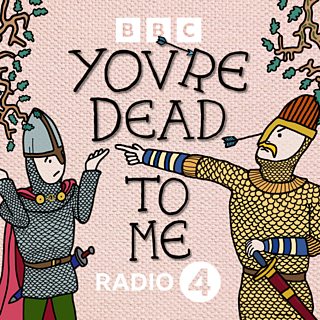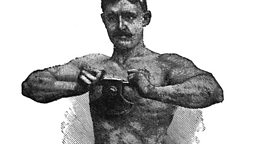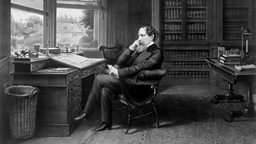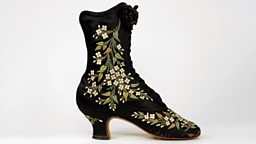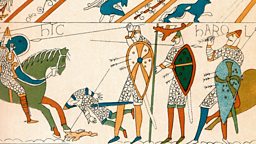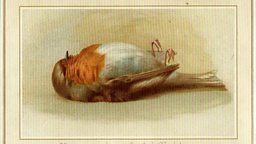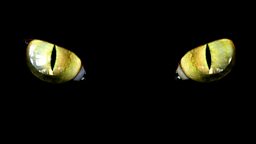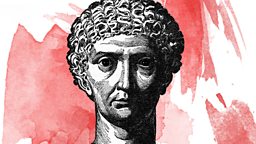Six shocking early medical uses of electricity
We are all familiar with electricity. But what about the relationship between electricity and the human body? Throughout the centuries, inventors and scientists have tried to help and heal people’s ailments using electrical devices.
In the Radio 4 history podcast, You’re Dead To Me, Greg Jenner is joined by electrifying historian Professor Iwan Rhys Morus and sparky comedian Olga Koch to learn all about vital electricity – the force of life itself – and how it has been harnessed. Here are some of the bizarre electrical inventions and cures they learned about…

1. The original electrical cure wasn’t a gadget, it was a fish
Electrotherapy – or electricity as medicine – has a long history. Roman doctors treated all kinds of illnesses with an electric fish known as the torpedo fish. Conditions that they attempted to cure with a few zaps from this little marine creature included headaches and gout.
Fever, deafness, blindness, haemorrhoids... Whatever was wrong with you, there was a good chance your doctor might prescribe electrotherapy.
2. Whatever illness you might have, a few volts will surely fix it
In the late 1700s, the list of conditions thought to be cured by electricity was vast: fever, deafness, blindness, headache, sore throat, epilepsy, irregular or stopped menstruation, tapeworms, kidney stones, haemorrhoids… Whatever was wrong with you, there was a good chance your doctor might prescribe electrotherapy, if he were one of the physicians who bought into these new-fangled treatments.
3. Several electrotherapy devices also doubled as fashion accessories
One popular electrical gadget in the 19th century was the electropathic belt. This was advertised to “weak men and delicate women”, and promised them new life and vigour. It was intended to treat conditions including general weakness and exhaustion, indigestion, heart disease, nervous disorders and, of course, poor performance in the bedroom. There was also an electric sandal that purported to cure foot problems.
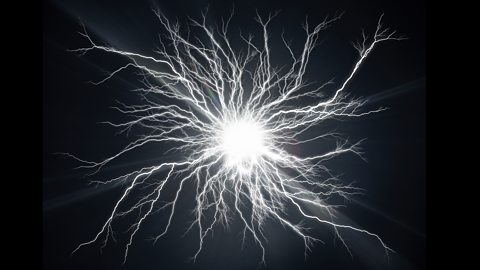
The shocking electricity quiz
Greg Jenner tests Olga Koch on her electrical history.
4. In the late 1800s, you could drink your electric cure…

From 1877, we have a description of an electric cocktail, which was apparently a fashionable winter beverage – great for warding off those December chills! A curl of platinum, attached to a machine, was lowered into a concoction of alcohol and sugar, and an electric current passed through it until the platinum glowed red-hot. The resulting beverage could then be served either warm or cold. Delicious and invigorating!
5. … or bathe in it!
In the 18th and 19th centuries, people were treated for conditions including hysteria and depression using electric baths. In most cases these did not actually involve water. Instead, insulated patients held on to a metal wire that “electrified” them, metaphorically bathing them in electricity. The patients also sat on insulating stools or chairs with glass legs to ground them and prevent shocks! The exception to this was the Sitzbad, invented by Georg Schmidt in 1784, in which a patient sitting in an electrified hot water bath was allegedly cured of haemorrhoids.
6. Last but not least, there was James Graham’s electric bed
James Graham was a Scottish “quack”: someone who pretended to have medical skills or knowledge. In 1779, he opened the Templum Aesculapium Sacrum, or the Temple of Health, a luxury experimental health facility next to the Strand in London. One of his treatment devices was his celestial bed, for couples struggling with impotence and infertility. The bed was 12 feet long and nine feet wide, with the words, “Be fruitful, multiply and replenish the earth” engraved across the top. It was connected to magnets and electrical machines, and apparently supported by 40 glass pillars. To enhance the couple’s romantic experience, exotic perfumes were released while organ music played.
